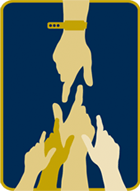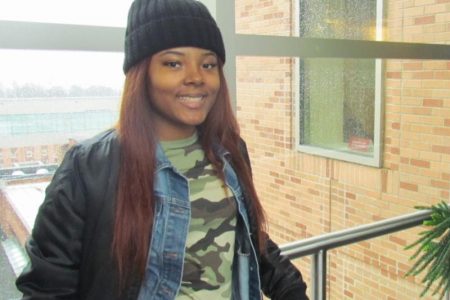Sierra smiled – and shed a few tears — as she posed recently with her physician, Dr. Mark Ball. After a round of tests and a sleepless night, she’d gotten the good news that she’s cancer free. It’s too soon for her to consider herself cured – that takes five years – but she was still thrilled hear that tests found no cancer cells six months after half of her kidney was removed.
Last July, the 23-year old Baltimore resident was having abdominal pains and a hard time breathing. Her aunt encouraged her to see a doctor. She did – and says her life became a blur after tests showed a malignant kidney tumor. She had little time to decide to have part of her kidney removed.
“I was really scared, I thought I was going to die. There are so many dangers and risks,” Sierra said. She had further reason to be concerned – her type of kidney cancer is rare and not usually seen in young adults, according to Dr. Ball. “It’s caused by a translocation of chromosomes on the DNA,” he explained, “but we don’t know why.”

Sierra & Dr. Mark Ball, National Cancer Institute
Sierra’s employer agreed to allow her to take a leave from her job to undergo treatment but while she was recovering, the employer had a change of heart and let her go. Suddenly, she faced the challenge of being physically unable to work much less to find a new job. She also needed to stay in an NIH clinical trial for close monitoring to be sure her surgery was successful and that she wouldn’t experience a relapse.
The financial pressure of bills piling up and the rent being due began to affect her recovery. Learning this, her social
worker introduced her to Friends at NIH, who paid her rent for two months.
Sierra says if she could talk to donors, “I’d thank them for finding it in their hearts to invest in people’s lives. People, like me, who have gone through a traumatic health crisis. Friends at NIH’s support is so appreciated.”
The emergency support eased Sierra’s fear of defaulting on her rent and gave her much-needed time to heal. Dr. Ball will follow her at the NIH for at least five years. Happily, Sierra has found a new, more flexible job and is looking to begin the “next chapter” of her story.





